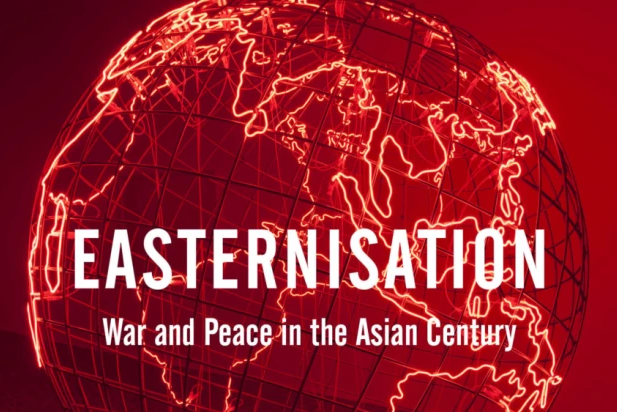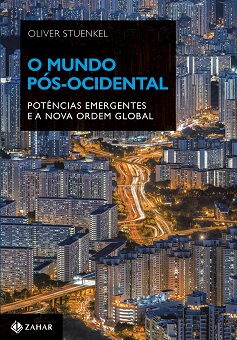
Book review: Easternisation. War and Peace in the Asian Century. Gideon Rachman. Vintage Digital, 2016. 320 pages. $28.19 (kindle, amazon.com)
The Financial Times‘ Gideon Rachman recently told his readers about a profoundly unsettling experience. A group made up of “plenty of eminent people” from the West, including former prime ministers and billionaires, traveled to Beijing to meet China’s President Xi Jinping. There, according to the writer, the foreign grandees were lectured, “treated a bit like a class of schoolchildren.”
We stand at the cusp of a historic shift of power away from the West towards Asia, and the consequences are increasingly being felt in global politics. With the day when China will overtake the United States as the world’s largest economy appearing on the horizon, the West is slowly losing the remarkable capacity to set the agenda on a global scale, something we have become so used to that it has become hard to imagine global affairs with a West no longer dominant. Several books over the past years have sought to make sense of this remarkable development, such as Randall Schweller’s Maxwell’s Demon and the Golden Apple (reviewed here), Martin Jacques’ When China Rules the World (reviewed here) and Aaron Friedberg’s A Contest for Supremacy. China, America, and the Struggle for Mastery in Asia (reviewed here). All of them focus, directly or indirectly, on China, whose strategy will have a crucial impact on geopolitical dynamics in the 21st century.
While several Washington-based scholars with ambitions to advise future Presidents still insist that the United States will be able to retain its position of leading power throughout the 21st century, Rachman forcefully states the obvious: It is only a question of time until Asia will yet again become the world’s economic center, after having temporarily lost it in the late 19th century, when Western powers technical and military superiority allowed them to plunder and control Asia — a period now known as the “century of humiliation” in China. A considerable part of the book is dedicated to an analysis about how the United States’ reaction to China’s rise. This makes sense, considering how important the bilateral relationship has become for the future of global order.
The trouble with books is that editors often insist on simple and catchy titles that oftentimes oversimplify the argument, and Easternisation sits uneasily with the far more complex phenomenon Rachman describes. Perhaps something like China’s Return to the Center or The Coming Rivalry between the United States and China would have been more adequate, since a lot of things he describes are not really about Asia’s rise, but about Beijing’s growing influence, and how the United States should respond. The book’s section on the United States’ troubles in the Middle East are interesting, but it is not entirely clear how it is related to the book’s overall theme.
The majority of analyses also argue that the decline of US hegemony will have largely negative consequences and make the world a more dangerous and unstable place (Amitav Acharya’s The End of American World Order, reviewed here, is an exception). Easternisation embraces the near-consensus that the arrival of genuine multipolarity will make the world both more complex and unstable. While that may be true, Rachman is somewhat guilty of Western-centrism, paying little attention to China’s and other emerging powers’ efforts to provide global public goods. China, for example, provides more peacekeeping troops than all the other P5 combined, and its decision to help launch several development banks is a positive step.
For those who have read previous books on the subjects, Rachman’s analysis does not bring anything fundamentally new. Rather, the book is enjoyable because the author includes many engaging anecdotes he collected during his travels as the FT‘s chief foreign affairs editor, which provided him with direct access to the powerful all over the world. The chapter on Russia’s turn to the East is particularly interesting, even though there is also evidence showing that we should not blindly believe current Russian rhetoric. Perhaps the best example for the chasm between rhetoric and reality is the year-long delay in the bridge across the Amur River between Russia and China (the Chinese have finished their part, but completion is delayed due to Russia’s bureaucracy).
China’s rise is inevitable, Rachman points out, and resisting it is largely pointless. Yet in his conclusion, he suddenly changes course and recommends that the United States should push back and contain China until Beijing accepts democratization. Pushing back against Chinese hegemony in the Pacific is “both morally defensible and strategically feasible, he says. Yet democratization in China is not only unlikely, but also overlooks a fundamental truth Western liberal scholars struggle to accept: Even a democratic China would hardly accept US hegemony in the long term. Indeed, the Communist Party may be the best institution to control nationalist forces at home and avoid a worst-case scenario in Asia: A repetition of Europe’s experience in 1914.
Read also:
Imperial Gamble: Putin, Ukraine, and the New Cold War








